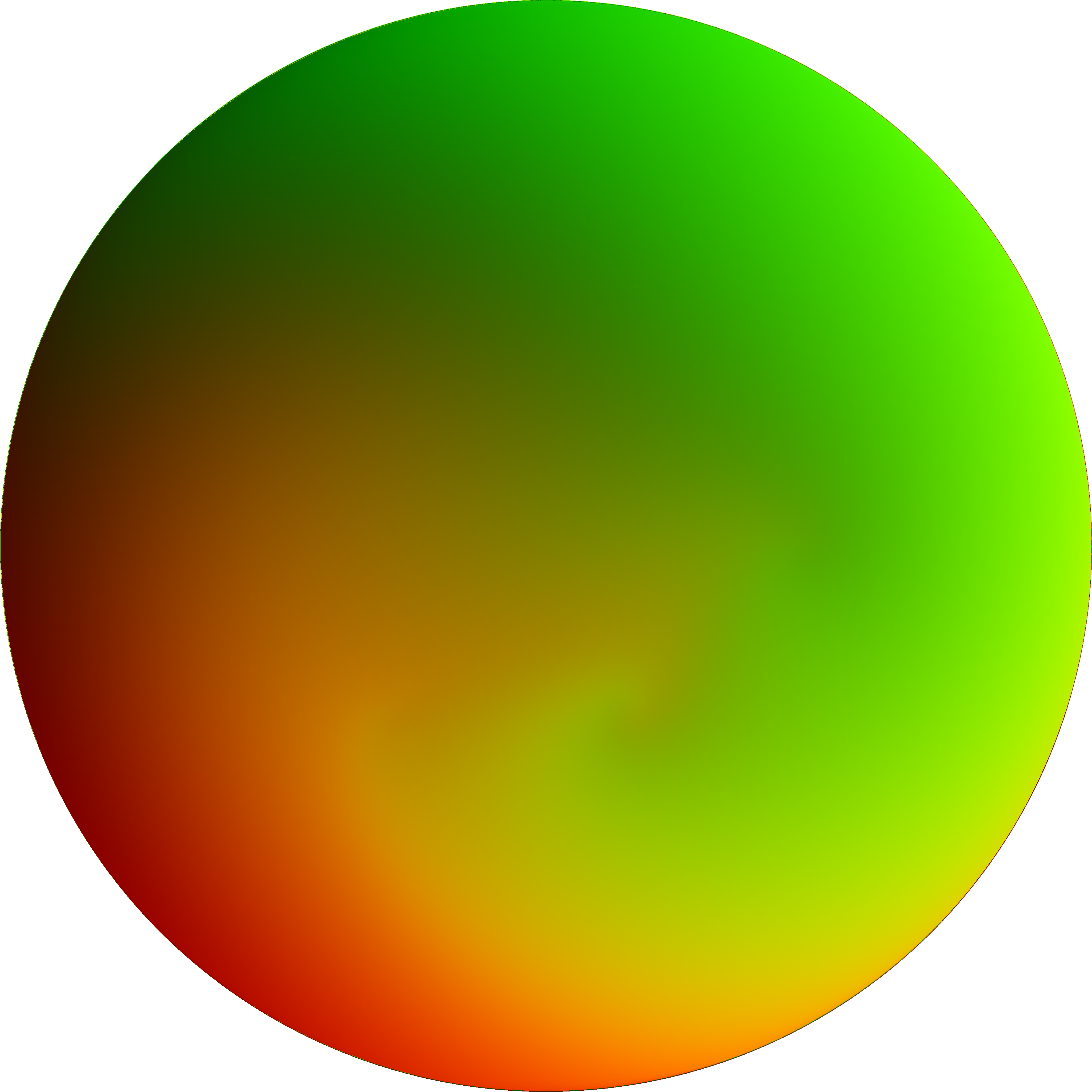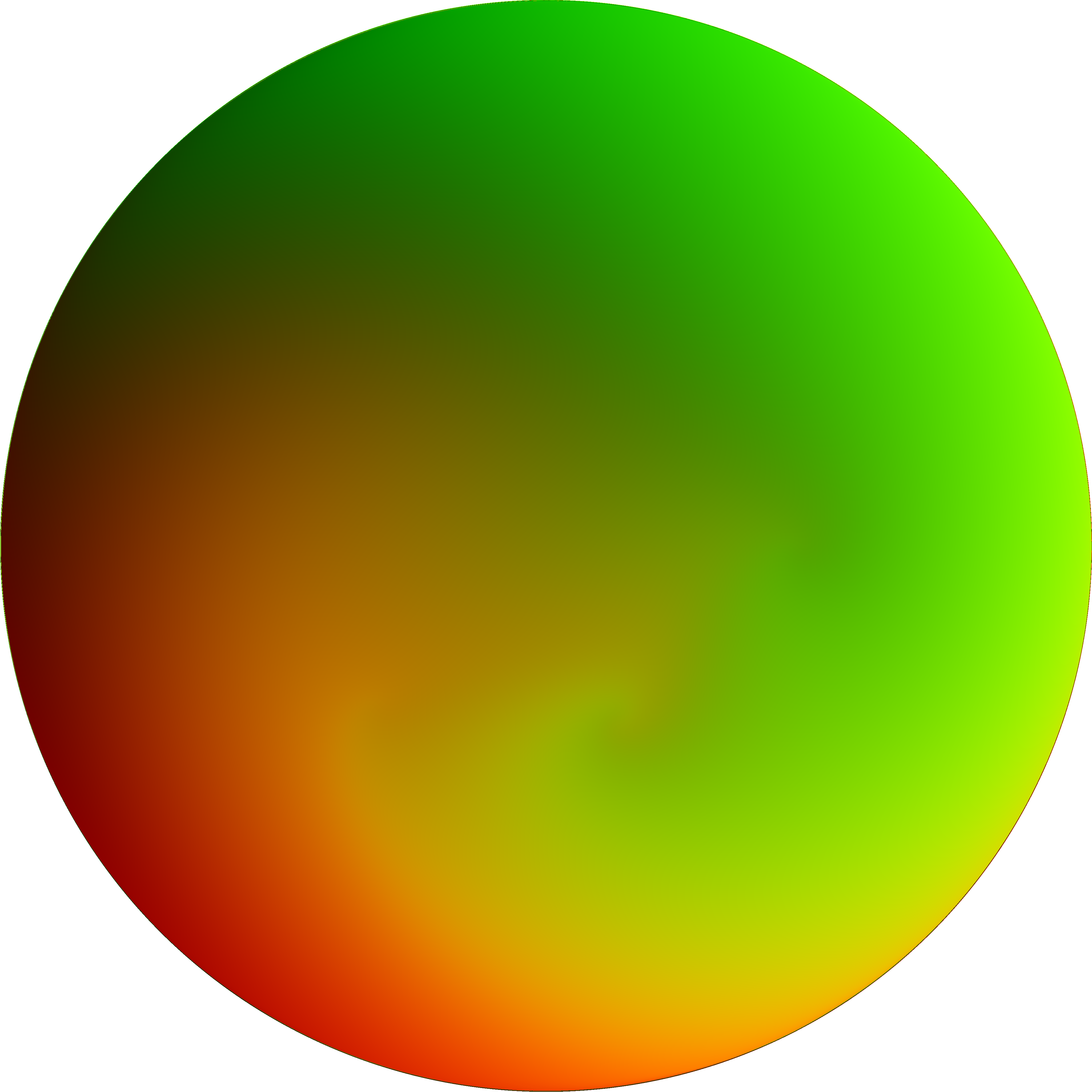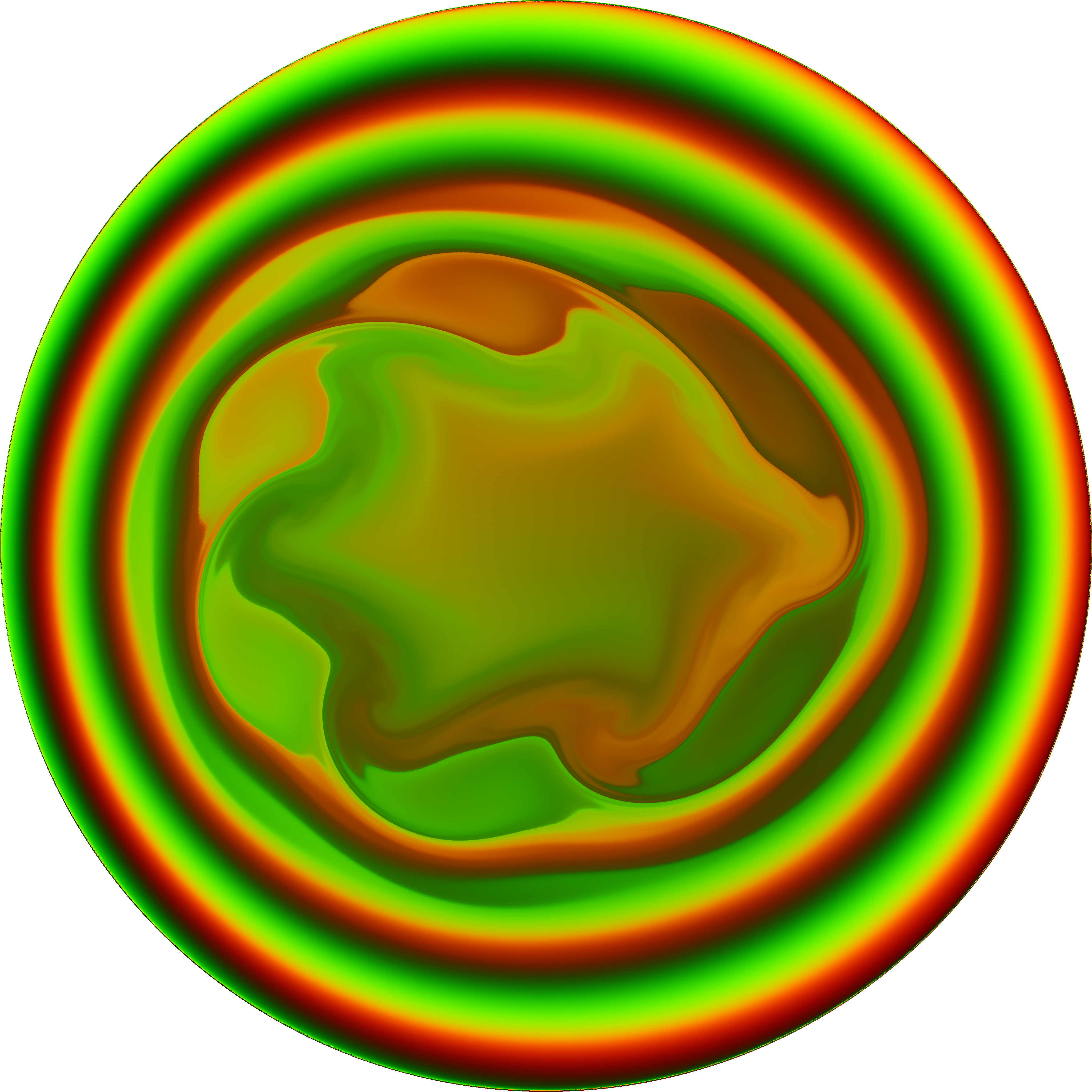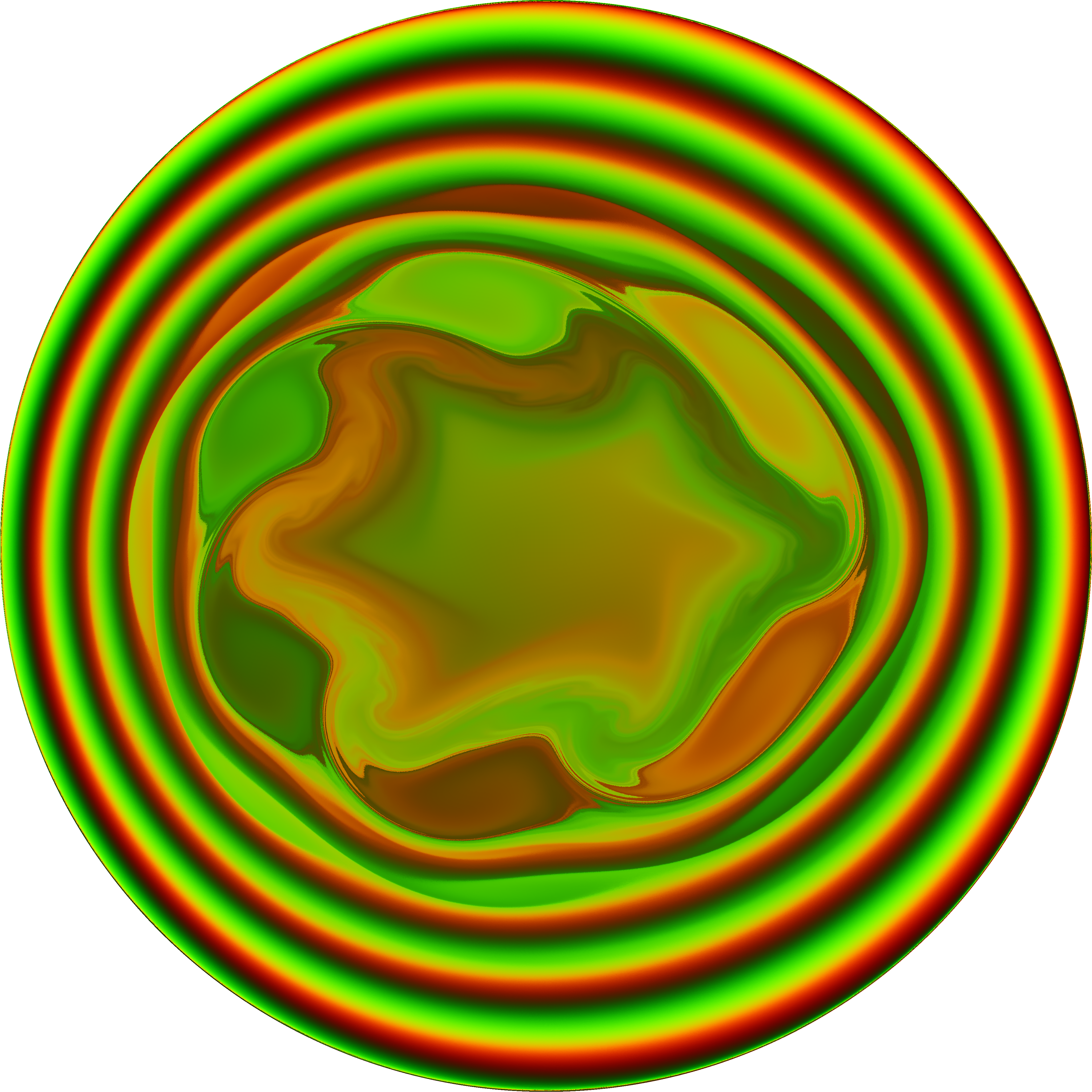Return maps for global surfaces of section
The first iterate of the return map for a disk-like global surface of section: mu=0.53, c=2.0 (very close to L1 with my conventions)
At the fifth iterate of the return map for a disk-like global surface of section: mu=0.53, c=2.0. Some of the typical behavior (as in Arnold's picture) is now visible. The situation is less typical than the corresponding picture for mu=0.48. This is because there are in this case (mu=0.53) two pairs of periodic points with the same period: each pair consists of an elliptic and hyperbolic periodic point, and there are starting to each other in a ``birth/death'' bifurcation (which happens for slightly larger mu).

Here is the 10-th iterate.

The 20-th. We see the formation of more standard elliptic islands and hyperbolic periodic points.

And the 30-th

We remark briefly that the numerical accuracy is limited for the 30-th (and even 20th) iterate. In other words, these pictures are mostly an indication of global behavior. Still this indication is rather good, especially near the elliptic periodic points.
A brief remark: the center is a fixed point corresponding to the direct periodic orbit. The boundary of the global surface of section is the retrograde periodic orbit.
Mass ratio mu=0.478
Here the same type of pictures for mu=0.478. The first iterate of the return map for a disk-like global surface of section: mu=0.478, c=2.0 (still very close to L1 with my conventions)
At the fifth iterate of the return map for a disk-like global surface of section: mu=0.0.478, c=2.0. Some of the typical behavior (as in Arnold's picture) is now visible. Note that this is more in line with Arnold's picture than the previous series for mu=0.53, c=2.0

Here is the 10-th iterate.

The 20-th. We see the formation of more standard elliptic islands and hyperbolic periodic points.

And the 30-th
